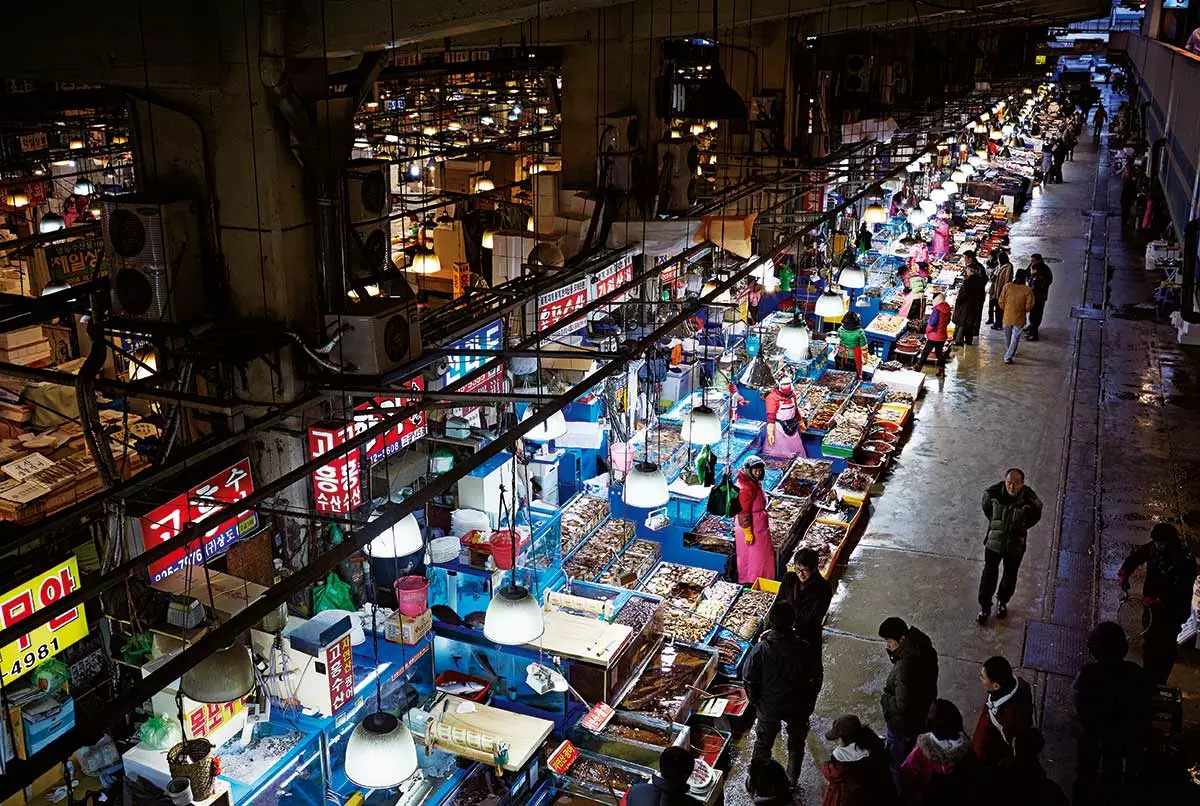
Noryangin Fish Market, one of the largest of its kind in South Korea
Charlie Cho and I were standing on the street in front of three restaurants that specialize in pig trotters. Charlie is tall and athletic , he has silver-colored hair and works as a creative director at a media outlet. Before I came to Seoul I asked the chef Hooni Kim , who lives in New York and has gained fame for his Korean tapas in Danji , to give me contacts in the city, that's how I got to Charlie, who insisted on taking me out to dinner. We just had to choose the right place to try pig trotters.
Charlie went for the one in the center and laughed when I asked why. "Because that place was the first to open its doors," he said, "and when it already had a very good reputation throughout the city, the other two settled here. That was 20 years ago, he added. something this flattering doesn't happen often in seoul , with streets or even entire neighborhoods known for a single dish.”
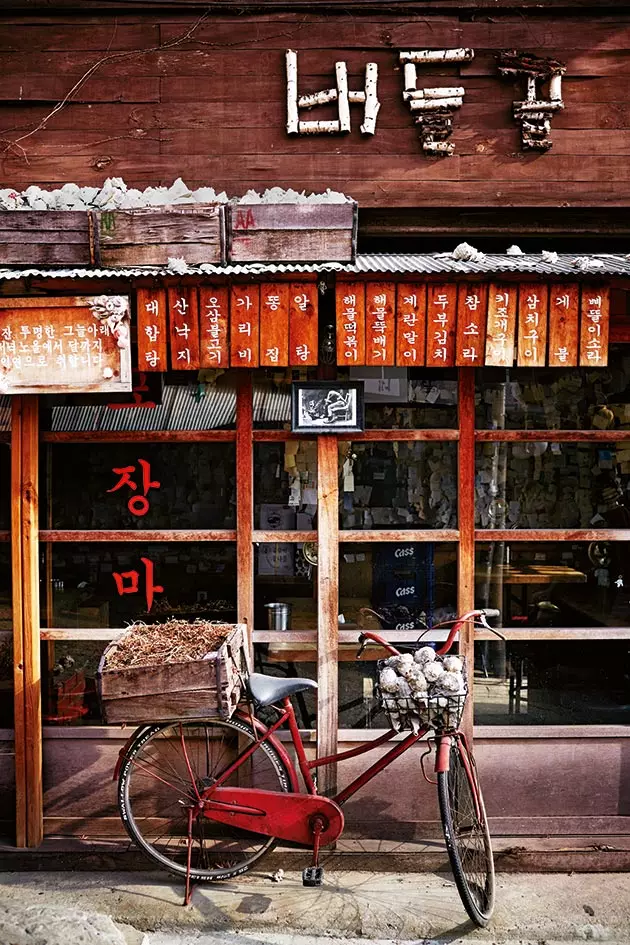
Bicycle in the neighborhood of the old city of Itaewon
“There is a lot of tension between trends and our eating habits,” he explained to me as he savored a plate of thinly sliced trotters. “ We Koreans sign up for any fashion , but we don't eat at a pig's trotter restaurant unless it's three generations old and dedicated exclusively to it."
Intercepting my attempt to refill my beer glass, and using both hands as tradition dictates, Charlie fills my glass. "We are very worried to maintain a suitable social status he said, but respect for our elders and to the established rules is in our DNA”.
It was what we came to Seoul for: try the hot pot restaurants, the barbecue joints , the markets where they prepare the seafood you choose. Seoul, the capital city of the fourth largest economy in Asia, is a vibrant metropolis where ten million people live on the banks of the Han River . It is both elegant and rough, giddy and conservative . The division created by the Han River is more than geographical. The pig's trotter restaurants are north of the river, in what is known as the old city, the south bank is home to gangnam and all that it represents.
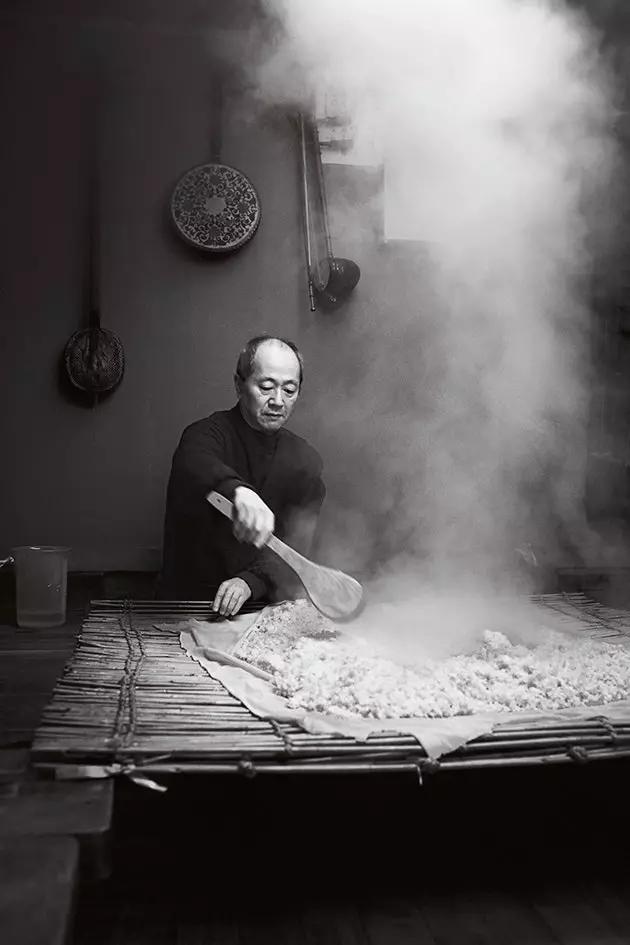
A maker at the Butterfly Brewery in Jangka
What they talk about in the south is of the potential of Bitcoin the next chapter of Survival Audition K-Pop Star , and the future of the loan economy. Up north, the conversation is more about the health benefits of fermentation, the proper use of white lotus flowers , and lunar calendar rhythms. In these northern districts, especially in Seodaemun, Jongno, Mapo Y Yong-san , the markets reflect the tradition of the country. There, among stalls selling beat-up laptops and golf clubs, the brutal culinary legacy of Seoul street food lives on, seen in the diversity of dishes prepared with pork and entrails of other animals, fried, roasted or blanched.
The village bukchon hanok , north of the river, is a mecca for Seoul traditions. It is one of the few areas where most of the houses have been protected, many of them now converted into restaurants and galleries. It was there that I met Kim Taek-sangm, master distiller at the Bukchon Heritage Studio . "Each day he has an associated zodiac animal," he told me as his slender fingers touched a pink plastic wash tube filled with rice and yeast. “Our ancestors used to do soy sauce on horse day because horses have the darkest blood. Soju is made on Pig day because the pig's blood is lighter and the liquor will be clearer."
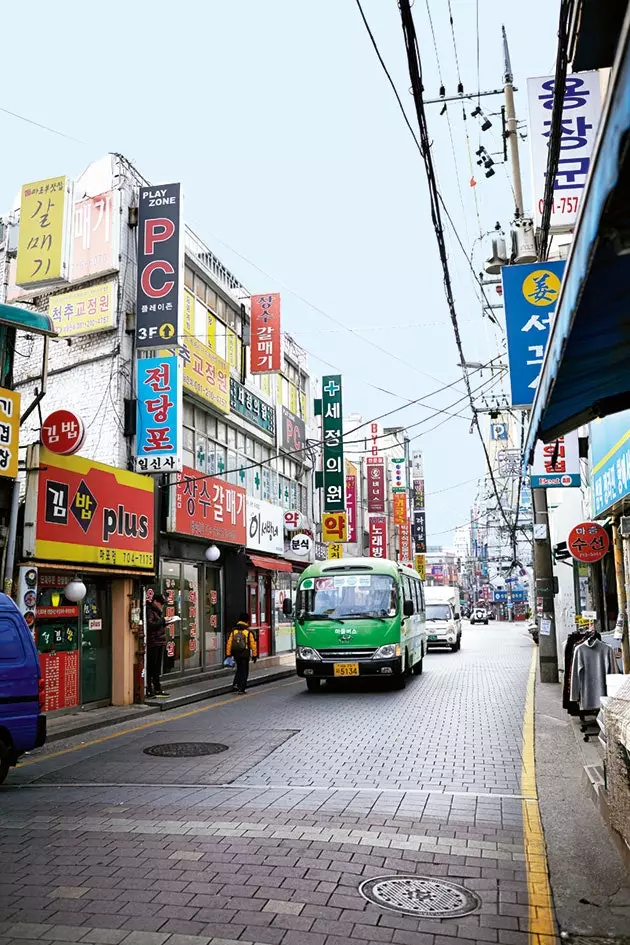
The Mapo district in Seoul
The original stories say that the pig, which represents the last day of the 12-day cycle, was the last animal to arrive at the meeting summoned by the Jade Emperor. A modern version of the fable would have the pig as a reveler that he went on a drunken spree with his boss and ended up asleep on a sidewalk with his picture hanging on it Black Out Korea , thus missing the emperor's call.
Drinking is a very serious matter in South Korea. . The soju is the best-selling distilled spirit in the world, only the two most important brands move 80 million boxes a year (the two brands of vodka that sell the most do not reach half) .
None of this has to do with Kim, whose watery eyes and apple-red cheeks speak for themselves of the 30 years he's spent perfecting the art he inherited from his mother. Kim's Soju samhaeju , is distinct, designated the eighth Seoul Intangible Cultural Heritage . Even when drunk straight it tastes sweet, then dry, while its industrial version is consistently sterile and unpleasant. Kim was eager to explain to me why. The mixture of it is made of nuruk , a kind of yeast, and two varieties of rice, as it has been since the Goryeo dynasty (918-1392) . Before distillation, each batch of 25 liters needs three stages of 30 days of fermentation in clay pot.
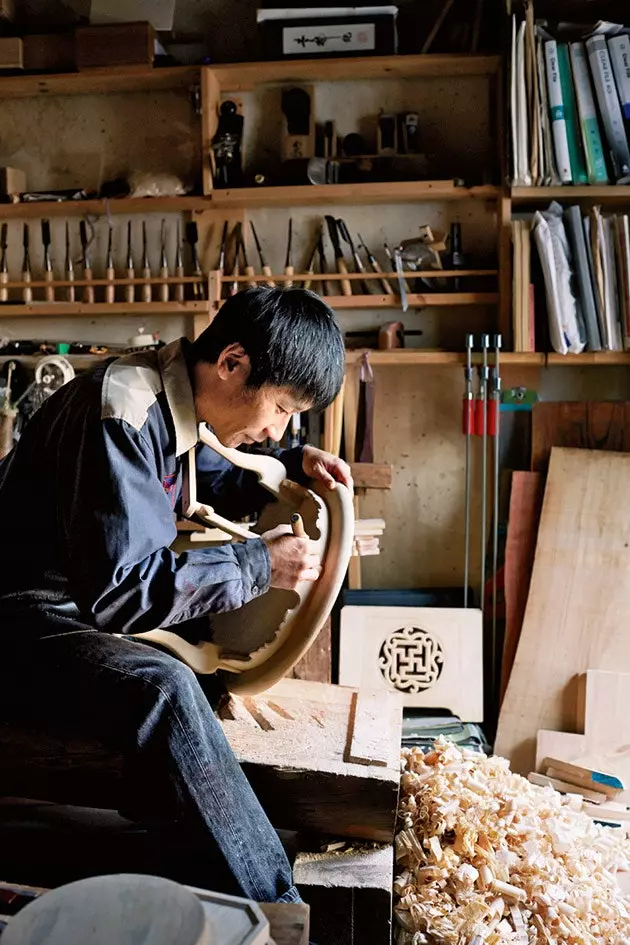
Lee Jong-gu making a soban
“But the most important ingredients are mostly my hands,” Kim said, interrupting her work with the rice to show me her hands. I was amazed at the softness of those pink palms and her slender fingers. "People ask me why I use my hands to mix it," he said growing up while he explained to me that he thinks he transmits a lactobacillus al samhaeju . "This is not exclusive to soju," Kim continued.
“No matter how many times you wash your hands, there is always residue”, he explained to me, citing a scientific study, and he had a hard time finding the words to define it: hand taste! Unlike Kim, many artisans, restaurateurs, and chefs in the old city spend many years looking outside of Korean culture for inspiration. lee jonggu he lived and worked in Milan as an advertising photographer for nearly 20 years before finding his calling as the self-proclaimed guardian of soban, one of South Korea's most neglected traditions. A hand-carved tray with a painfully intricate design, and with a cultural meaning rooted in Confucianism ; the soban was the surface where Korean life took place.
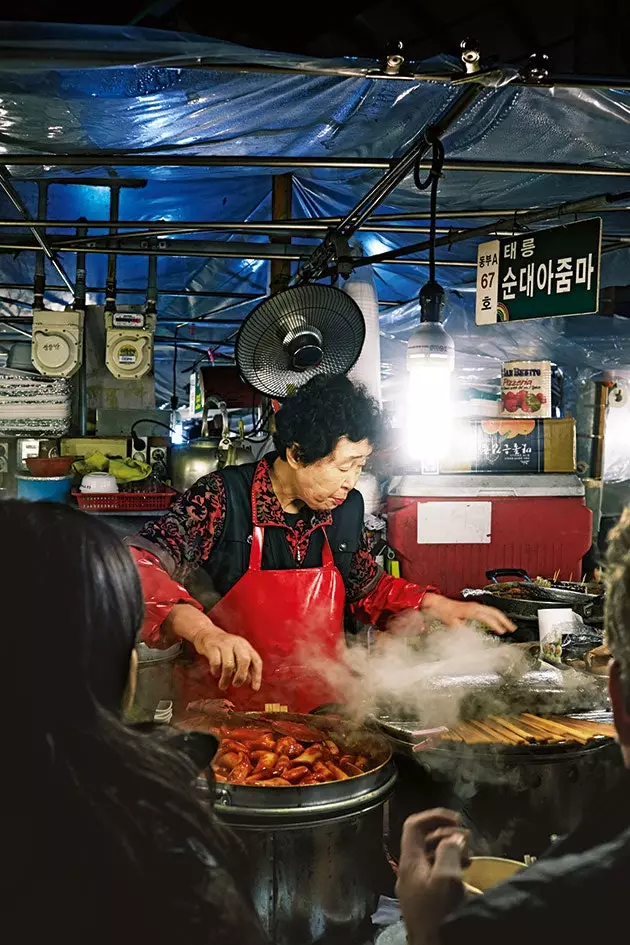
A vendor at Gwangjang Market
It was used at births, weddings, birthdays, funerals, and every meal in between. In the late 1800s, individual dinners, along with the traditional ' live on the ground ’, was replaced by foreign customs. But Koreans have never completely abandoned their traditions.
“Even if we have our giant televisions and sofas , everyone sits on the floor and hugs the furniture,” Lee told me. “There is something in us that makes us want to be close to the ground.” Lee Jae Ho was wearing 15 years as a financial analyst before starting to open restaurants, first a few kfc franchises which were unsuccessful and then three years ago he created Doo-Boo-Ma-Eol. Tucked away on one of the small streets off the main streets of Insadong, an area once filled with military stores and now filled with boutiques, cafes, and restaurants, it's one of the few places in Seoul that makes its own tofu. . “The big companies produce tofu but hardly any restaurants makes it homemade Lee told me in front of a container that represents the custom, a stainless steel tofu maker in a cramped room. “Twenty years ago every housewife did hers, but now there is no time ”. One of the characteristics of the red sauce common in many Korean dishes is the combination of flavor that is obtained by cooking the ingredients for a whole day.
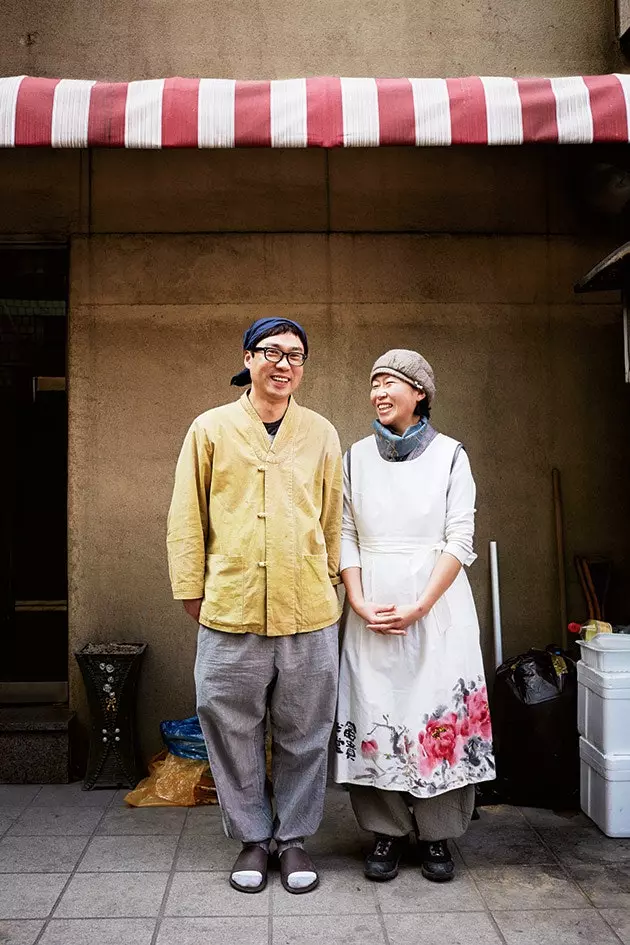
Hangaram owner Kim Bong-chan and his lotus rice supplier Jang Mi-ran
He adds that to silken sheets of home-made soft tofu, puts it in a very hot stone bowl, and the result is the soon dubu jjigae (soft tofu stew) here at Doo-Boo-Ma-Eol . The fire went from sparkling to hellish as the kotgae tang (blue crab stew) was served, the fire miraculously bringing flavors together. delicious, sweet and savory , which filled our palate with joy. We continue with our gastronomic tour in what is known as a temple of cuisine, first in Hangaram , where chef Kim Bongchan focuses his menu on northern dishes like stuffed lotus leaves and fermented ray wings, and then on to Dadam, where the young chef Jung Jaedek explained the attraction of the kitchen: “I thought it was boring, too simple to be cool. I was wrong. When you're cooking you have to think about where the food is coming from, who it's going to be served to, where it's going. when you're eating you have to think about the bite in your mouth, not the one on the plate. That's what you have to focus on."
Indeed, the austere charms of this type of cuisine (no fire, no salt, no garlic, no meat) offer a counterpoint to the dense, complicated flavors and meat-centric dishes of more popular cuisine.
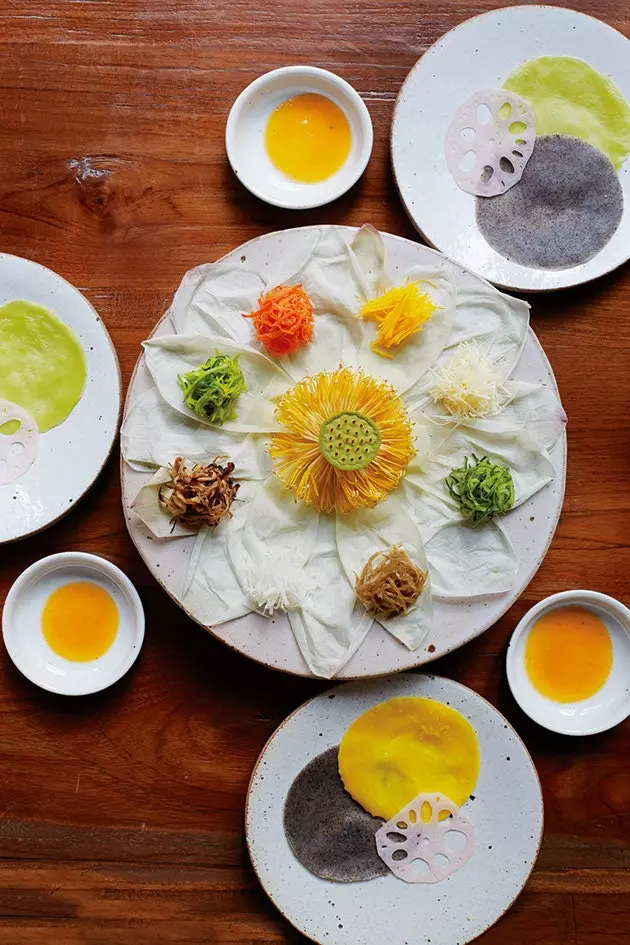
lotus flower goo jul pan at Dadam restaurant
The dishes we ordered at Dadam had evocative names like 'Roasted Sweet Potato Rolled Mountain' and ' Rules, piety and wisdom ’, and they were elegantly presented. Marcus and I heard about a special soy sauce that is made at Seoil Farm about an hour outside of town, so we headed east to visit it and meet its owner. Shu Boon-rye . Thirty years ago, Shu, who used to be a travel agent, started making soy sauce to give as gifts due to the healing power of his mother's recipe. With water from a protected area of the Han, yellow sea salt , and its own soybeans, produces one of the most coveted sauces.
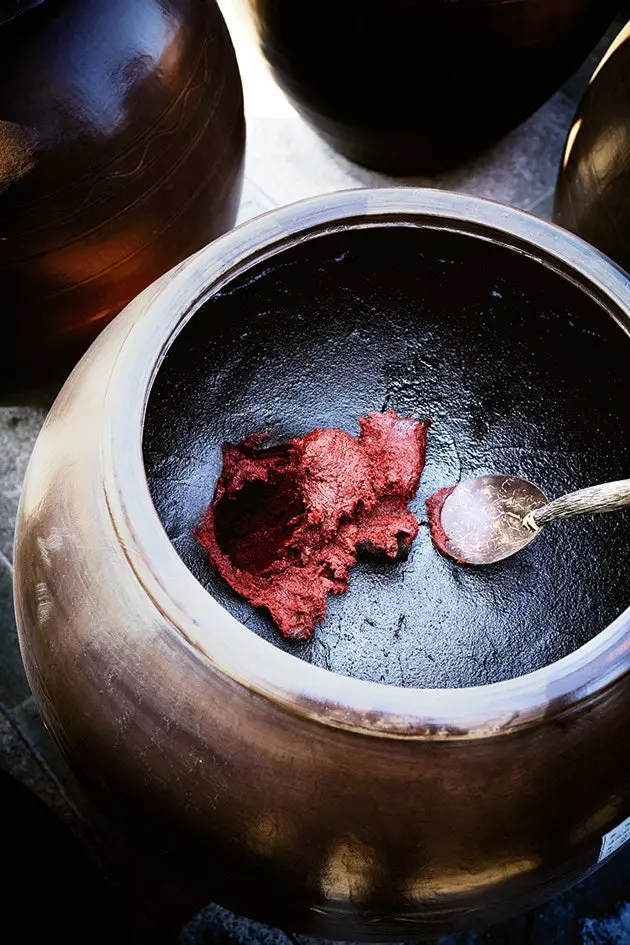
Bean paste at Seoil Farm
The main dining room Seoil Farm it overlooks a tranquil garden, with legions of clay pots lined up next to a hedge. This place is known for its main dish, the gan-jang-gejang , or raw crab. It's a seemingly simple meal: horseshoe crab, not as pretty as the blue crab but larger and immensely popular in Asia. It is marinated with Shu's special soy sauce (macerated for three years) which is mixed with homemade fruit vinegar, sugar, ginger, garlic, onion, liquorice, dashima seaweed and fish sauce. After three or four days, a tender and fragrant pulp emerges from the crabs, which is known as Ladrón de arroz because of the numerous portions of rice that are consumed when the broth is taken.
As we drove back to the city, amidst the light and noise at dusk, I found myself thinking how in a place as futuristic as this, South Koreans seem to have collectively stopped to take a deep breath. I have seen the effects in almost every meal I have eaten . It reminded me of something Charlie Cho he had told me while we ate pig trotters and drank beer. “We have had several waves of construction of large buildings, the demolition of entire blocks, even neighborhoods, to make room for the next shining tower . He has made us think, wonder at all we've left behind ’’.
* This article is published in the May 74 Condé Nast Traveler magazine. This issue is available in its digital version for iPad in the iTunes AppStore, and in the digital version for PC, Mac, Smartphone and iPad in the virtual newsstand by Zinio (on Smartphone devices: Android, PC/Mac, Win8, WebOS, Rim, iPad) .
*** You may also be interested in...**
- Gangman has another style - Border tourism: binoculars, passports and _ checkpoints _- 19 things you didn't know about your passport friend - Guide to tipping - 17 things you should know when moving through the airport so you don't end up like Melendi
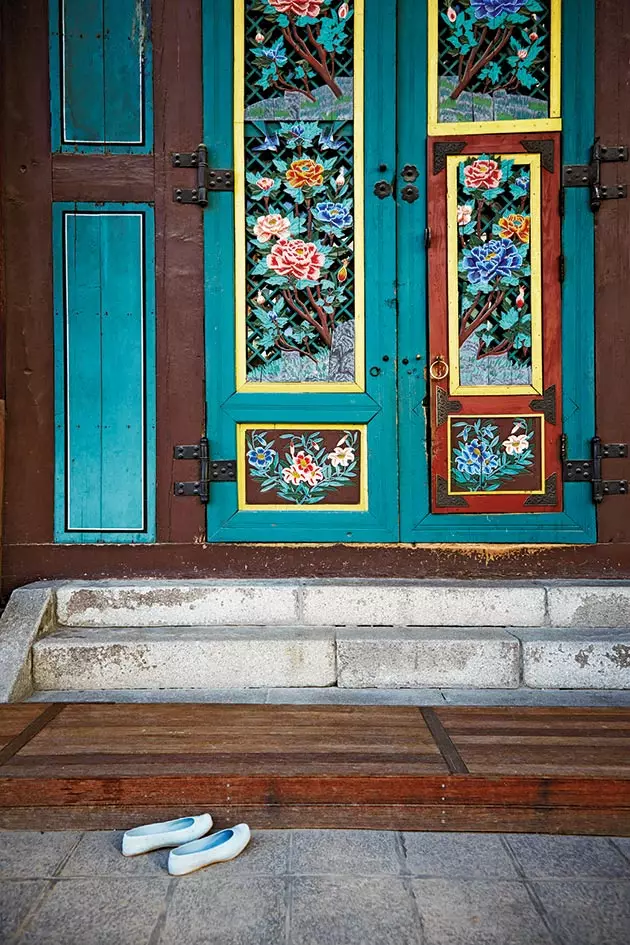
One of the traditional hand-painted wooden doors at Jogyesa Temple, built in 1938, is the center of Zen Buddhism in South Korea
